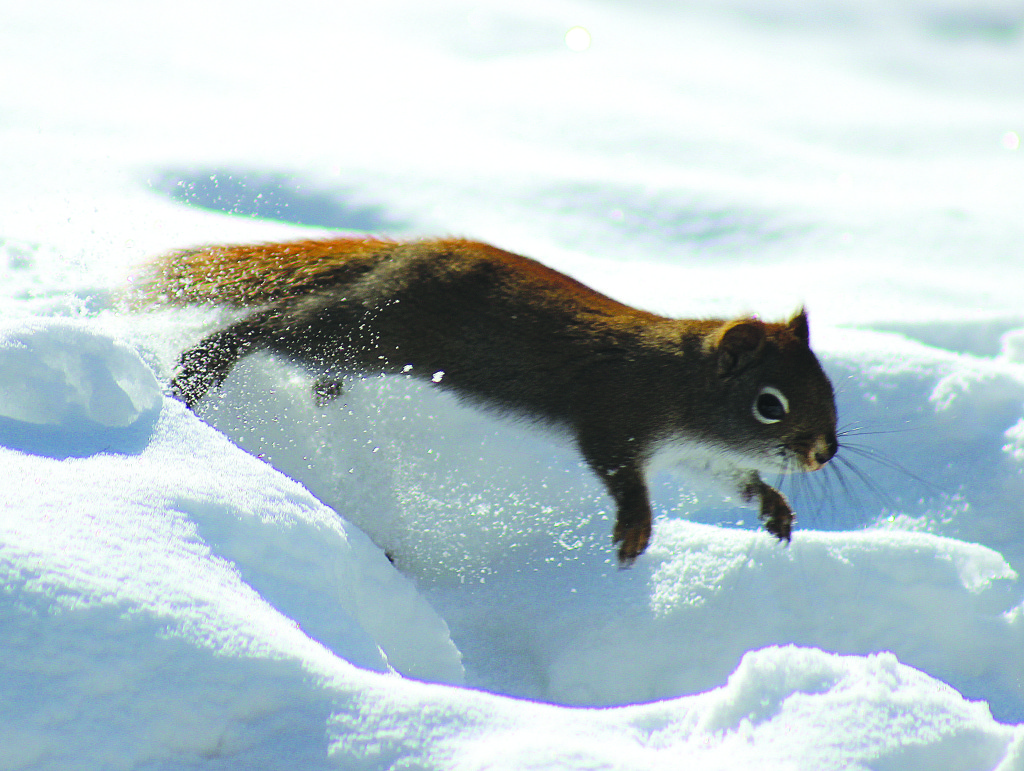|
This page was exported from Bancroft this Week
[ https://www.bancroftthisweek.com ] Export date: Mon Mar 31 1:11:29 2025 / +0000 GMT |
Watching the feeder By Nate Smelle KEEPING AN EYE ON THE birdfeeder in the fall is always a good idea in Bancroft. It's the time of year when we start to see many of the winter species return to our shared habitat. Among the new arrivals there are long ones, tall ones, short ones, brown ones, black ones, round ones, big ones, and crazy ones. Watching the politics of the birdfeeder work itself out is also always a treat. The quick thinking blackcapped chickadees and sparrows are always the first to get their beaks in the seed. Next to make an appearance are the jays, both blue and gray. This is when we notice the first shift in hierarchy occur. With the black-capped chickadees, sparrows and other small birds all moving at roughly the same speed, and with similar appetites motivating them the dispersal of seed is free and fair for all. Each and every bird consumes a sufficient amount of food while comfortably enjoying the abundance. Recognizing their size advantage, the quantity of the food source, and their own appetite, the jays descend on the feast and tap into the food supply announcing their authority. This means change for all of the smaller birds already thriving upon the ample nutrition. The change isn't necessarily bad for the smaller birds, but it does require them to change their lifestyle. Now the smaller birds need to pay closer attention to how much food is available in relation to other food sources in their winter habitat in case the free lunch at the feeder were to disappear more quickly than expected. It is around the same time that the jays arrive, that the woodpeckers decide to join in on the feast. While they do enjoy the fast food they tend to spend more time tapping into the food supply beneath the surface of the standing dead trees scattered throughout the forest. They also like to utilize these places as homes. All of this commotion draws attention to the feeder food supply. Of course this doesn't go unnoticed by the birds of prey. They see this feasting of friends and want to join in the party. Sounds like fun, but it's not all that much fun for the smaller birds once these larger birds move into town. Once the first Owl, Hawk, or Eagle makes a kill—ending the peaceful sharing of resources—the party is over. Never again for the rest of the season do these birds enjoy their meal with the same sense of security. Until the warm weather of spring returns they peer over their shoulder with every peck; on the lookout for the next attacker. Luckily for the community these larger birds of prey understand that the healthier the smaller birds are the healthier they are also. If this balance is not maintained carefully every bird suffers. If the larger birds of prey choose to carelessly consume every little critter they cross paths with, they too will soon go from feast to famine. This doesn't happen too often in the realm of the winged ones, however, it does happen on occasion when the usual food system is out of whack. This temporary disruption to the natural order of things does not last long—nature always tends to find the balance needed. Still... with the small and medium-sized birds greatly outnumbering the larger birds of prey it is a wonder why they don't flock together to protect their food source and prevent their own demise in the talons of their predators. One thing we can be certain of though, is that when there are too many big birds around the feeder all the little birds disappear. |
| Excerpt: One thing we can be certain of though is that when there are too many big birds around the feeder all the little birds disappear. |
|
Post date: 2014-11-25 18:02:33 Post date GMT: 2014-11-25 23:02:33 Post modified date: 2014-11-25 18:02:33 Post modified date GMT: 2014-11-25 23:02:33 |
| Powered by [ Universal Post Manager ] plugin. HTML saving format developed by gVectors Team www.gVectors.com |